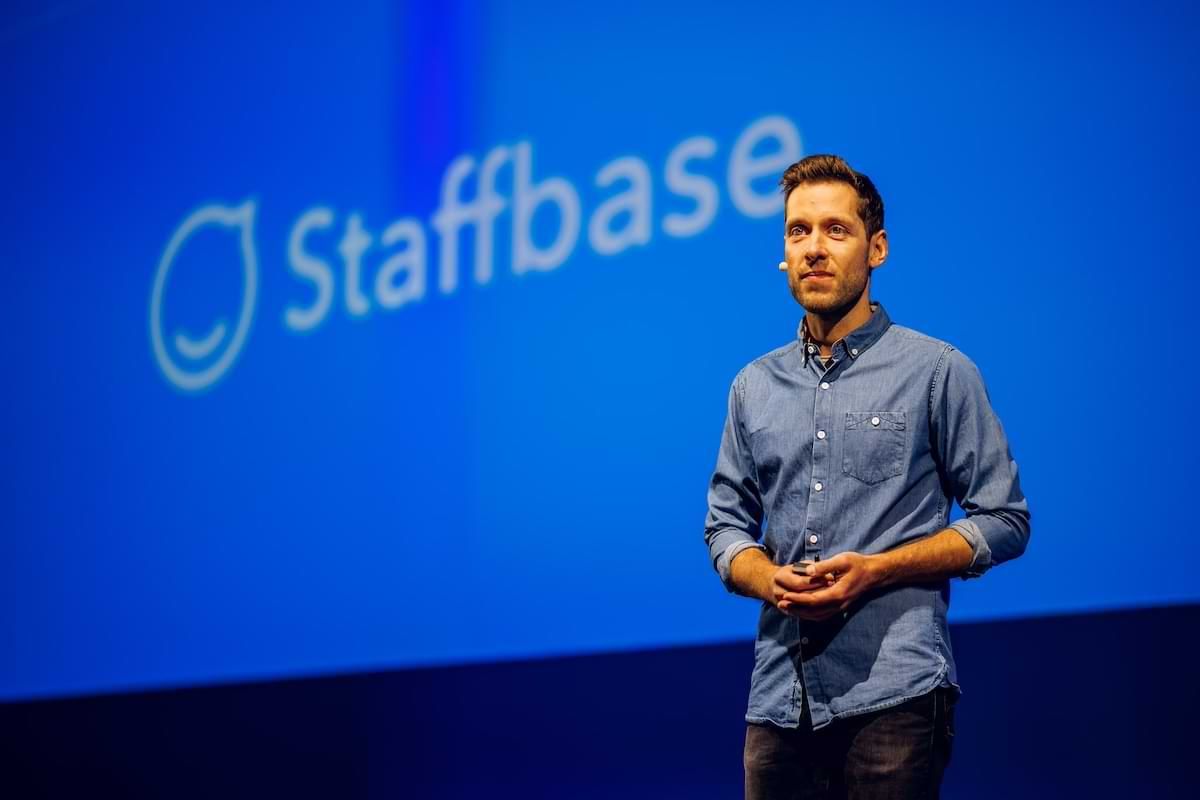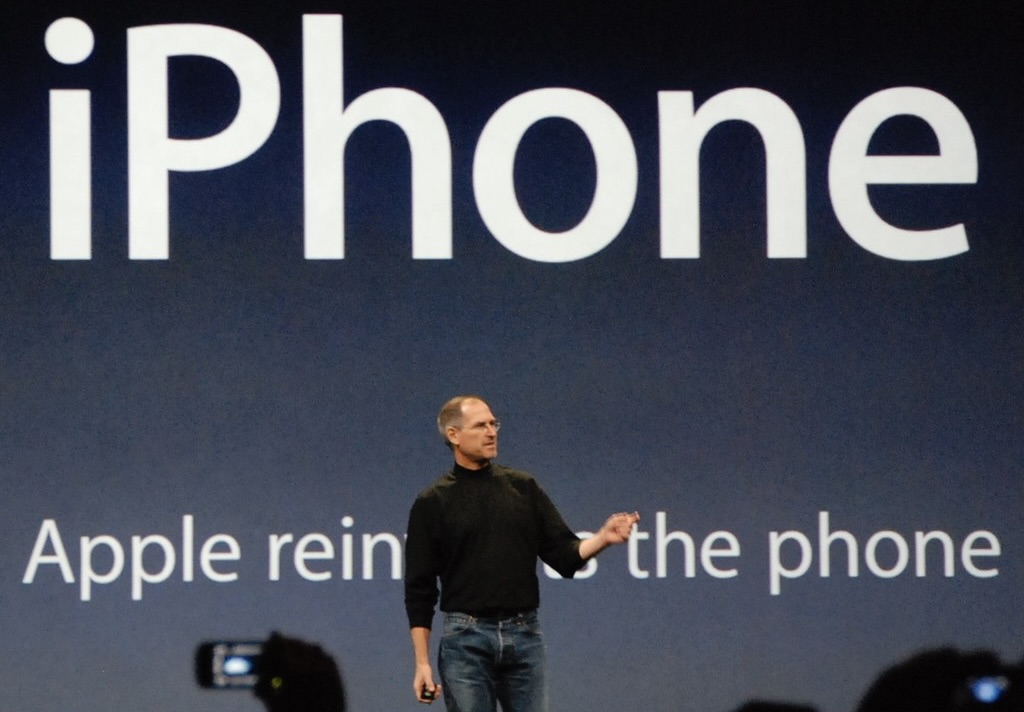Unlocking the Power of Inspiration: A CEO’s Perspective

Did you know that one of the most important inventions in recent history almost didn’t happen? When teams at Apple first suggested that they attempt to turn the company’s market-leading MP3 player — the iPod — into a cell phone, Steve Jobs was skeptical, to say the least.
He worried about cannibalizing sales of the iPod and detested the thought of working with mobile network operators. It took two groups of engineers at Apple six months to convince him to go all in on the project. Steve Jobs almost killed the product that made Apple the biggest company on Earth.
But when Jobs stood on the stage to launch the iPhone in 2007, few would have guessed that he had been so skeptical just two years earlier. He inspired his employees and the wider world with his vision and the way he communicated it. The first iPhone was in no way a perfect product. Yet in one hour and nineteen minutes, Jobs inspired the entire market. He unleashed a wave of innovation from his team that would soon destroy market leaders Blackberry and Nokia.
 Steve Jobs at the presentation of the iPhone in 2007. Source
Steve Jobs at the presentation of the iPhone in 2007. Source
Was Steve Jobs really the celebrated “Think Different” innovator celebrated in the media? Maybe. But was he one of the most inspirational communicators of our age? Most definitely. He understood the power of communications and used it with incredible precision. And this went way beyond his keynotes. It extended into every aspect of Apple’s strategy, from hardware to customer service and corporate social responsibility. As a result, every aspect of the customer experience reflected that core vision.
Now you’re probably thinking that not every company is as interesting as Apple. And not every company has Steve Jobs. And you’re absolutely right. Yet if there’s one thing I’ve learned in the years since we launched Staffbase, it’s that companies with teams inspired to deliver on shared goals simply achieve better results than their peers. Inspired teams achieve more. And — though they may not have a Steve Jobs — the most effective companies understand that inspiration starts with communication.
I first picked up on this in 2018. Back then, we sold Staffbase as an employee app for companies to communicate with frontline workers who lacked access to a computer. Yet, we began to notice a strange pattern in our data. Customers were using our app not only to reach their non-desk workers but were rolling it out to all of their employees. Our intended extension of the existing intranet was actually disrupting it. I decided to get to the bottom of this trend. I took a road trip to visit our customers, meeting communication teams and business leaders.
What I surprisingly found was that the reason our customers were investing in our software wasn’t simply to reach frontline workers. It was to unlock the power of communication to establish culture, shared purpose, and to inspire their organizations. The CEO of one of our biggest customers told me:
Because of the fundamental business transformation ahead of us, we needed to change who we think we are, before we were able to actually change.”
Staffbase’s focus was on supporting communication teams as much as possible. We built a great tool for reaching non-desk workers. Now, on the back of it, we were creating the most complete platform for communicators to make a real impact with their audience. This was one big reason why customers were choosing to work with us.
Over the last decade, the world has become more polarized than ever. More than 1 in 4 Gen Z employees are not comfortable working with people of different ideologies. The 2023 Edelman Trust Barometer was even more concerning. It found that 80% of individuals surveyed globally wouldn’t want to work alongside people who strongly disagreed with their point of view.
Yet businesses are finding ways to bring people together to form well-functioning work teams and a positive organizational culture. At the same time, consumers, investors, and other stakeholders are demanding more than just a strong product and some financial reporting. They want to know what a company stands for. And they want these beliefs to reflect their understanding of the world and to be in sync with their narratives.
There’s a clear societal benefit to bringing people together to achieve shared goals. But it’s also just good business. Research from Bain and Company, published in Harvard Business Review, showed that inspired employees — those who experience a deep connection with their work, are inspired by their leaders, and get meaning and inspiration from their company’s mission — are more than twice as productive as those who are merely satisfied.
That productivity bears results such as better products, tighter code, and excellent customer experiences. Great brands start from the inside out. By ensuring that employees understand what they need to do and the role they play in delivering on their company’s mission, they are more inclined to take the initiative and go the extra mile.
Over time, all of these extra miles accumulate into a huge competitive advantage. Great brands attract even better people. Their efforts are reflected in the premium prices they can charge, in growing customer bases, and advances in innovation that are beyond the reach of their competitors.
The reverse is just as true: failure to actively inspire teams and stakeholders erodes brand value and increases reputational risk. A Weber Shandwick report in 2020 found that CEOs attributed 63% of their company’s market value to their reputation. In this economy, organizations are especially vulnerable to anything that damages their reputations. We see these risks being played out across different sectors on a daily basis.
It takes many good deeds to build a good reputation, and only one bad one to lose it.”
Benjamin Franklin
So the case to inspire stakeholders with a shared vision is pretty compelling. But the best vision and smartest narrative count for little if they don’t reach your most critical audience: the employees who represent your brand every day.
Communicating with employees is now more challenging than ever, due to the enormous growth in the number of frontline workers — who make up more than 70% of all employees in the US according to McKinsey — and the explosion of hybrid work, which has extended beyond the pandemic to become the norm.
The common experiences that we used to rely on to communicate with employees, measure engagement, and build brand culture, such as water cooler moments, branded receptions, in-person town hall meetings, or posters on the break room wall, now have a fraction of the impact that they once had. Inspiration starts with communication. And today’s communication is primarily digital.
 In today’s hybrid workplace, meetings around the office water cooler have become a rarity.
In today’s hybrid workplace, meetings around the office water cooler have become a rarity.
That’s why I believe every business leader needs to understand the narrative map they’re charting. Likewise, they need to ensure that it will be communicated as effectively as possible with their teams, customers, and stakeholders. Actively building and managing an inspirational narrative drives your corporate reputation and brand value. It’s as important as understanding your P&L, though it’s currently far less appreciated.
The economy is rapidly diverging into high-value brands with inspired employees on the one hand, and companies struggling and competing solely on price on the other. Don’t be caught on the wrong side of that divide. Inspire your teams and stakeholders to drive your business forward, ensuring that they are more engaged and building a competitive advantage in the process. If you’re ready, then it’s our mission at Staffbase to support you.









